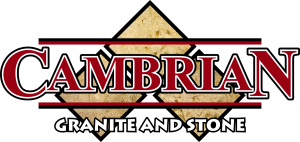Our Products
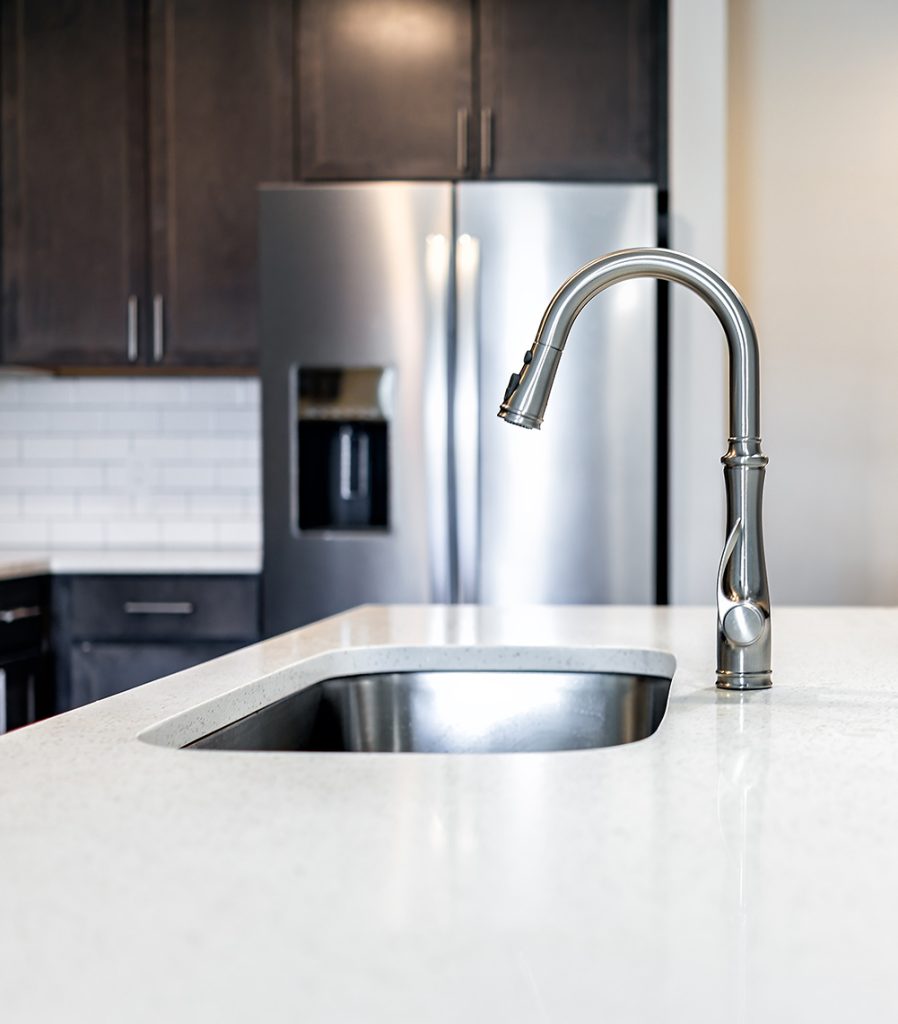
Quartz
Material: An engineered stone made from a mix of natural quartz and resin binders.
Durability: Very durable, non-porous, and resistant to stains, scratches, and bacteria. However, it’s sensitive to heat and can be damaged by hot pans.
Maintenance: Low maintenance, does not need sealing, and is easy to clean with mild soap and water.
Appearance: Consistent in color and pattern, available in a wide variety of designs and finishes, often mimicking natural stones like granite and marble.
Pros: Low maintenance, durable, uniform appearance, and wide design options.
Cons: Not heat-resistant; can be damaged by hot cookware. Lacks the natural variation of granite or quartzite.
Granite
Material: A natural stone made from cooled magma.
Durability: Extremely durable, heat-resistant, and scratch-resistant, but can be prone to chipping at edges.
Maintenance: Needs periodic sealing (every 1-2 years) to prevent stains and water penetration.
Appearance: Each slab is unique, offering a wide range of natural patterns and colors. The veining and patterns can vary significantly.
Pros: Durable, heat-resistant, and visually striking with natural patterns.
Cons: Requires regular sealing, more maintenance than quartz. It can also be more expensive than engineered options.
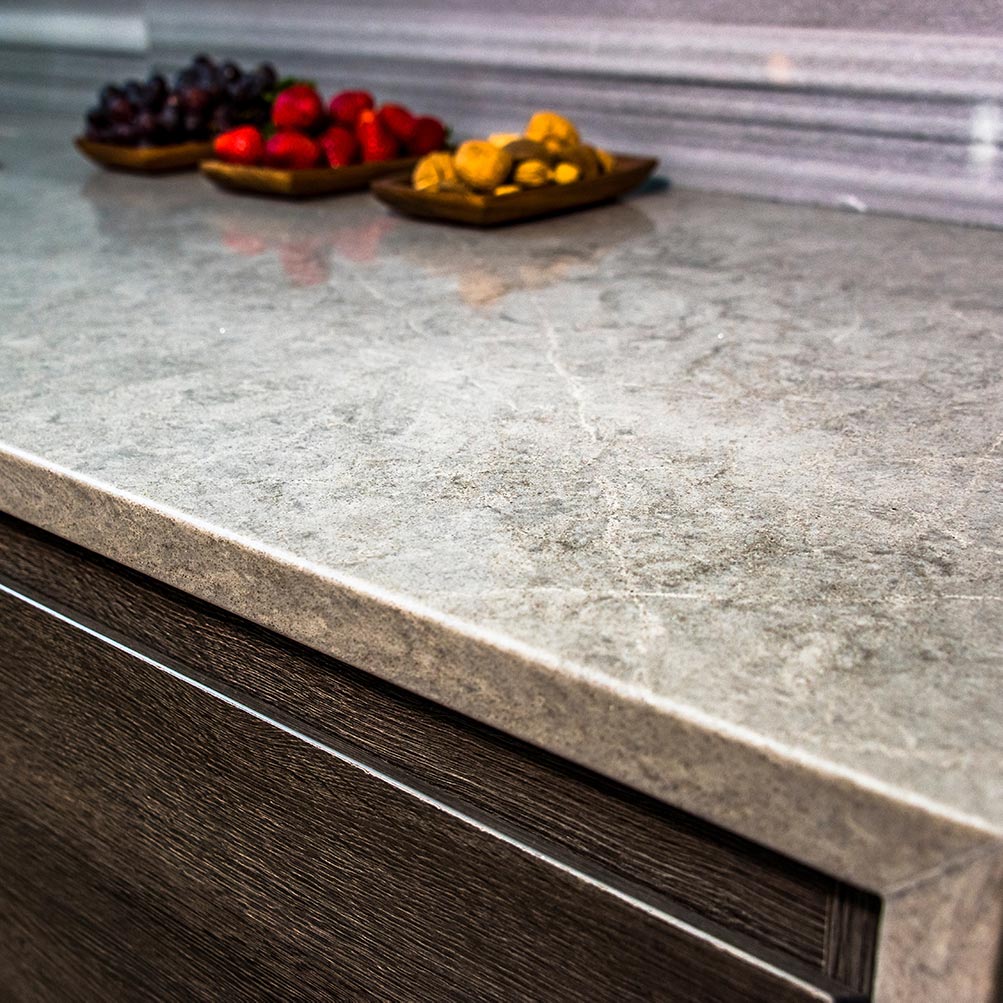
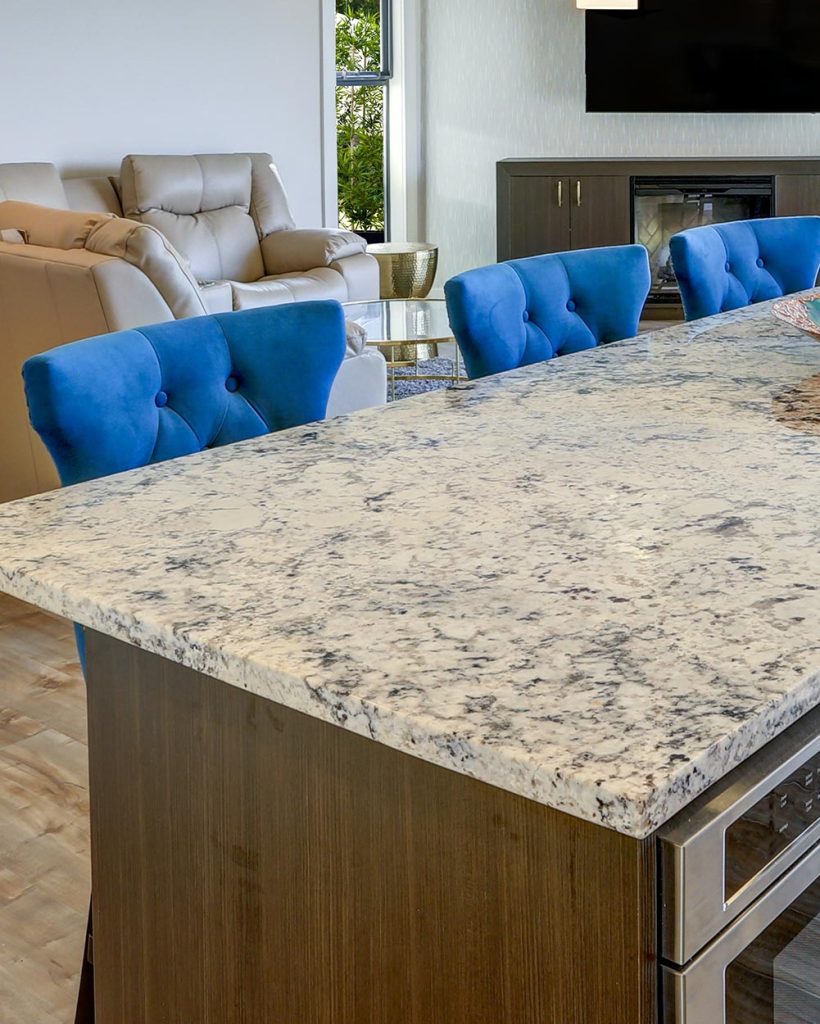
Quartzite
Material: A natural stone that starts as sandstone, then undergoes high heat and pressure to become much harder.
Durability: Extremely hard, heat-resistant, and scratch-resistant, making it one of the toughest natural stones available.
Maintenance: Requires periodic sealing to prevent stains and water absorption, similar to granite.
Appearance: Often resembles marble, with beautiful veins and a natural, more subtle look. It’s available in various colors but usually has a more consistent pattern than granite.
Pros: Highly durable, heat-resistant, and beautiful with a natural marble-like aesthetic.
Cons: Requires sealing, more expensive than granite and quartz, and the appearance may be less diverse than granite.
Marble
Appearance: Known for its luxurious and classic appearance, marble comes in a range of whites, creams, and grays, often with distinctive veining. It’s often used in high-end kitchens and bathrooms for its elegance.
Durability: Marble is softer and more porous than granite and quartz, which makes it more prone to scratching, staining, and etching (especially from acidic substances like lemon juice or vinegar). It’s not as heat-resistant as granite or quartzite.
Maintenance: Requires regular sealing and more maintenance overall. Acidic foods and drinks can cause permanent etching (dull spots) on the surface. Marble also needs to be wiped down promptly to avoid stains.
Cost: Marble tends to be on the higher end, especially for rare colors or classic varieties.
Feel: Marble feels cool and smooth, which can be great for baking or just for that high-end, elegant aesthetic.
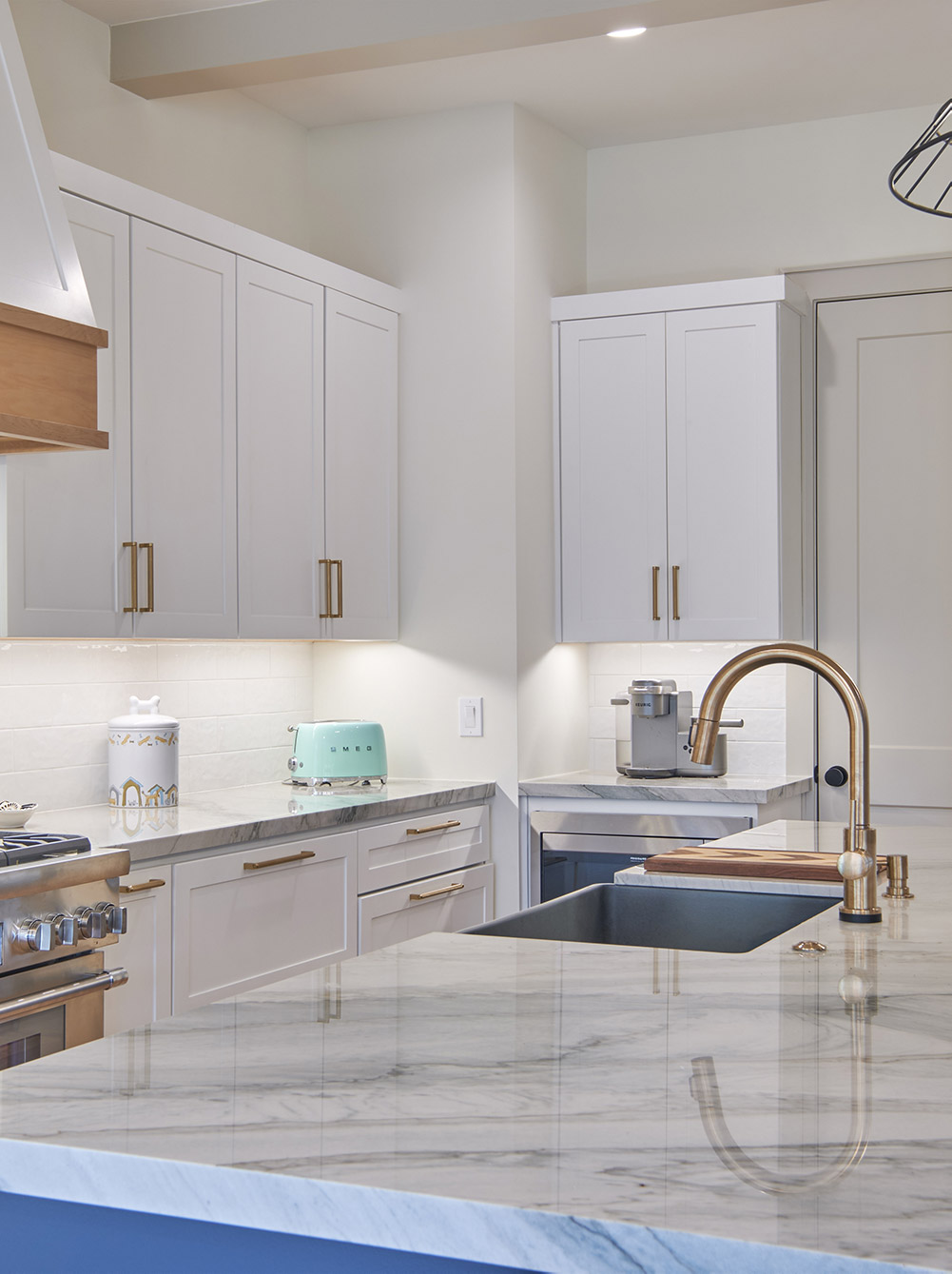
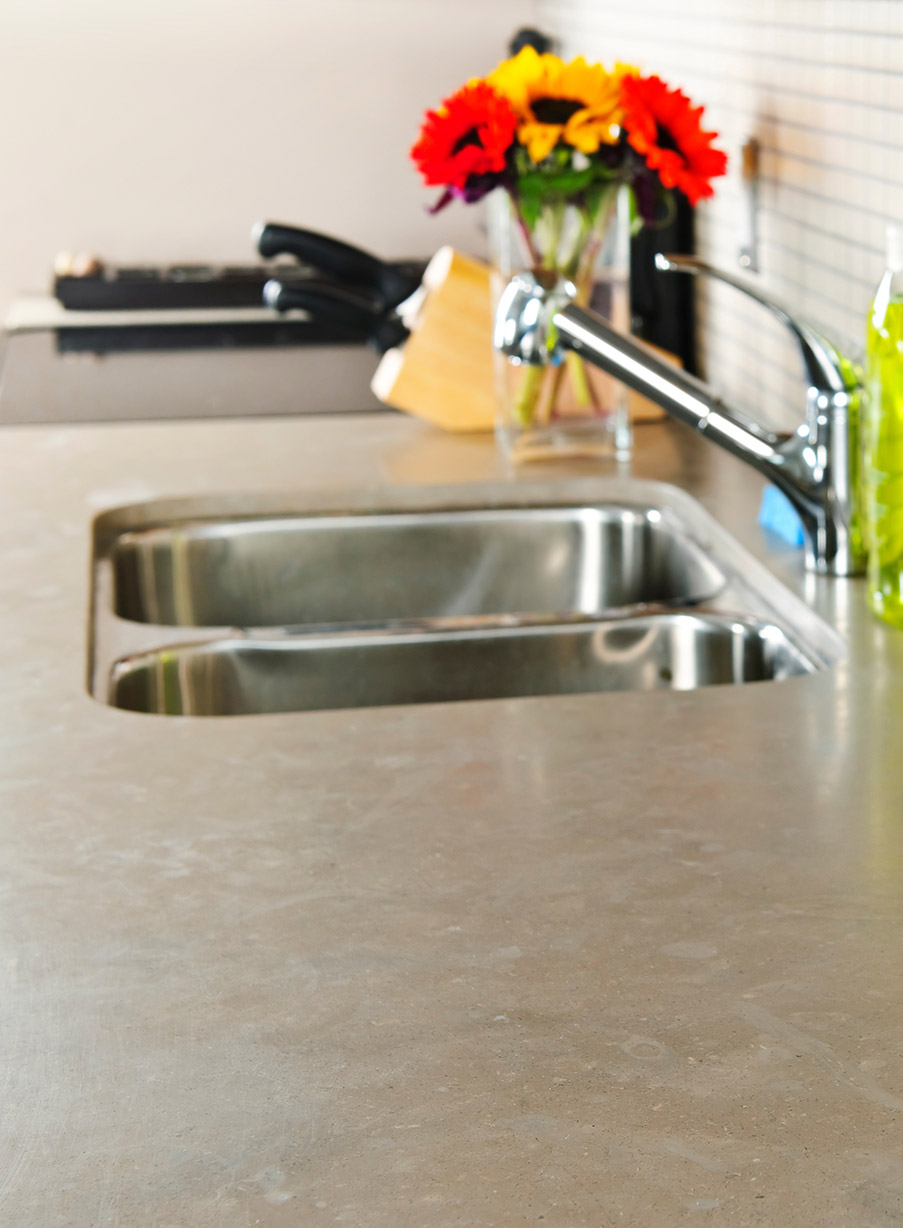
Soapstone
Appearance: A softer, natural stone with a more muted, earthy palette. It tends to be gray, green, or blue, and it has a smooth, almost velvety texture. Over time, it darkens and develops a natural patina, especially in areas that see heavy use.
Durability: Highly resistant to heat and staining. Soapstone is softer than granite and quartz, which means it can scratch more easily, but it’s incredibly resilient when it comes to heat and will not crack under heat exposure.
Maintenance: Very low-maintenance. Soapstone doesn’t need to be sealed, although many people apply mineral oil to bring out the color and give it a darker, richer appearance. It’s also very easy to repair; minor scratches can be sanded out.
Cost: Generally more affordable than marble and quartzite, though prices can vary depending on the source and quality.
Feel: Soapstone has a very tactile, smooth feel. It’s naturally warm to the touch, and its matte finish makes it feel more rustic and natural compared to polished stones like granite or marble.
Cambrian Square Foot Program
We have a square foot program with our largest suppliers, Cambrian and CFK/Silestone. Click each item to learn more.
CAMBRIA
Price Level 1 - Classic
Price Level 2 - Signature
Price Level 3 - Luxury
Silestone
Price Level 1 & 2
Price Level 3
Price Level 4
Price Level 5
- Bohemian Flame Suede
- Chateau Brown Polished
- Eclectic Pearl Polished
- ET Calacatta Gold Polished & Suede
- Ethereal Dusk Polished
- Ethereal Glow Polished & Suede
- Ethereal Haze Polished
- Ethereal Noctis Polished
- ET Marquina Polished & Suede
- Jardin Emerald Polished
- Parisian Bleu Polished
- Riviera Rose Polished
- Romantic Ash Polished
- Versailles Ivory Polished
- Victorian Silver Polished
dekton
Private Studio Price Level 1
Private Studio Price Level 2
Private Studio Price Level 3
Edge Profiles
Countertop edge profiles refer to the shape and style of the edge of the countertop, and they can affect both the aesthetic and functionality of the space. Each profile has its unique style and function, and the best one depends on the overall design of your space, your needs, and how much maintenance you’re willing to do.
Bevel
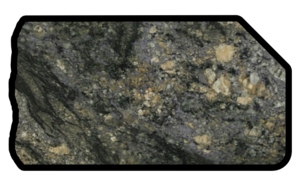
A bevel edge is a straight, angled cut at the top corner of the countertop. It typically has a 45-degree angle, which creates a sharp, diagonal line from the top of the counter to the side.
Look: Sleek and modern, often used in contemporary designs.
Pros: It’s durable and practical because the angle reduces the risk of chipping.
Cons: The angled edge can be more difficult to clean, especially in tight corners.
Bullnose
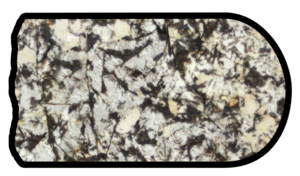
A bullnose edge features a smooth, rounded curve at the top corner of the countertop. It’s often considered the classic, soft edge.
Look: Traditional and soft, giving a gentle, polished appearance.
Pros: Safe for families with children because there are no sharp corners. It’s also easy to clean.
Cons: This style may look less modern compared to other sharper-edged profiles.
Eased
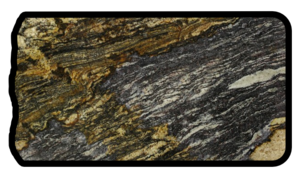
An eased edge has soft, straight corners with slightly rounded edges. The transition from the top to the side is subtle, creating a relaxed and clean look.
Look: Simple, subtle, and minimalist, it’s the most common edge used in kitchens.
Pros: Easy to clean, simple, and modern. It’s also less prone to chipping compared to sharper edges.
Cons: Can be too basic for some, and less eye-catching than other more intricate profiles.
Half Bullnose
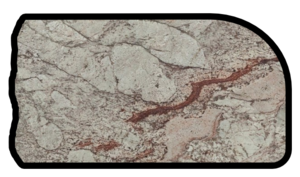
A half bullnose is similar to a bullnose but only rounds the top corner of the counter while leaving the bottom edge flat.
Look: Soft and rounded at the top, but more angular and modern at the bottom.
Pros: The combination of round and flat edges offers a more contemporary style while maintaining the safety benefits of the bullnose.
Cons: Still rounded, but can be slightly harder to clean than a straight edge.
Ogee
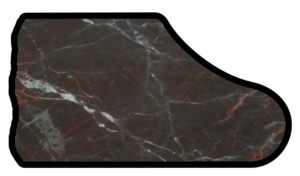
An ogee edge is more intricate and involves a double curve, creating a more decorative, “S”-shaped design with a concave and convex profile.
Look: Elegant, detailed, and more traditional or luxurious. It adds a dramatic effect to the countertop.
Pros: A beautiful and ornate design that works well in classical or luxurious spaces.
Cons: Can be difficult to clean, and the complexity may not suit modern or minimalist interiors. More prone to chipping due to the detailed curves.
Quarter Round
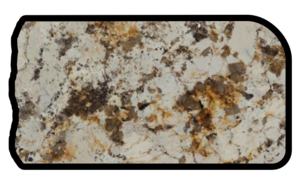
A quarter round edge involves a small, rounded curve along the edge that is a quarter of a full circle. It’s similar to the bullnose but smaller.
Look: Simple, small, and smooth with a subtle curve.
Pros: Safe and smooth, easy to clean, and provides a modest touch of elegance.
Cons: Less dramatic than other rounded or angular edge profiles, so may not suit more modern or bold designs.
Want to pick the right material for your home?
Speak with our experts to evaluate all of our material options, and ensure you get the perfect fit for your space.
